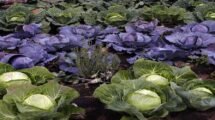“Organic cotton” production on rising in north Indian states, led by M.P. and Odisha
India’s cotton production of over 360 lakh bales (approximately 6.12 million tonnes) accounts for approximately 25% of global cotton output.
India produces 1.23 million tonnes (mt) of organic cotton, accounting for 51% of global organic cotton production of 2.40 mt. China, Kyrgyzstan, Turkey, Tajikistan, Tanzania, the United States, Uganda, Greece, Benin, Peru, Burkina Faso, Pakistan, Egypt, Ethiopia, Brazil, Mali, and Argentina are the other organic cotton producing countries.
However, due to high production costs, lower demand, and farmers turning to illegal GM seeds, organic cotton production is limited to a few states. Also Read | Untimely rain, pink bollworm, poor HTBT drop cotton production by 20-25%.
Increased output of Organic cotton
Organic cotton production has increased in the last five years, despite the proliferation of illegal herbicide-tolerant Bt (HTBt) cotton seeds in Maharashtra, Andhra Pradesh, Telangana, and other states. However, the production of organic cotton is high in northern states like Madhya Pradesh, Maharashtra, Gujarat, Odisha, and Rajasthan. In the last five years, these states have produced 18,61,926 tonnes of organic cotton, accounting for 99 percent of total cotton production in India.
According to data presented to Rajya Sabha last month by the Ministry of Textiles, the production of organic cotton in 2020-21 will be 8,10,934 tonnes, up from 3,35,712 tonnes in 2019-20 and 3,12,876 tonnes in 2018-19.
Among the northern states of India, Madhya Pradesh leads the organic cotton producers chart, accounting for 38% of total production over the last five years, followed by Odisha (20%) and Maharashtra (19 percent). The other two major organic cotton producers are Gujarat (15%) and Rajasthan (8%).
Interestingly, the Department of Agriculture and Farmers Welfare is implementing a cotton development program in 15 major cotton-growing states as part of the National Food Security Mission (NFSM) to increase production and productivity. However, according to government data, only eight states produced organic cotton in the last five years.
Cotton farming that is organic
During 2017-21, the Indian Council of Agricultural Research (ICAR)-Central Institute for Cotton Research (CICR) and the All India Coordinated Research Project (AICRP) on cotton released 64 non-Bt (non-GM) cotton varieties/hybrids that organic cotton growers can use. More than 6.5 million cotton farmers work directly in cultivation, with an additional 10.5 million employed in allied industries. India is also the world’s second-largest consumer, with an estimated consumption of 303 lakh bales (of 170 kg each).
‘It will take time to transition a significant portion of cotton cultivation to organic cotton.’ Farmers, on the other hand, are seriously considering going organic. ‘The government must ensure that demand for organic cotton grows in India and abroad,’ says Beed-based farmer Vilak Nakhate, who grows organic cotton.
Farmers who are involved in organic cotton production claim that organic textiles are a low-volume business with little demand due to high prices. Also Read | Class 10 dropout is now Organic farming adviser to Agri universities & ICAR’s curriculum committee.
According to the Organic Trade Association, organic cotton is grown in a way that minimizes environmental impact by replenishing and maintaining soil fertility, expanding biologically diverse agriculture, and prohibiting the use of synthetic toxic and persistent pesticides and fertilizers.


















Add Comment